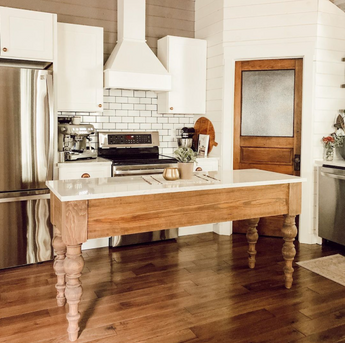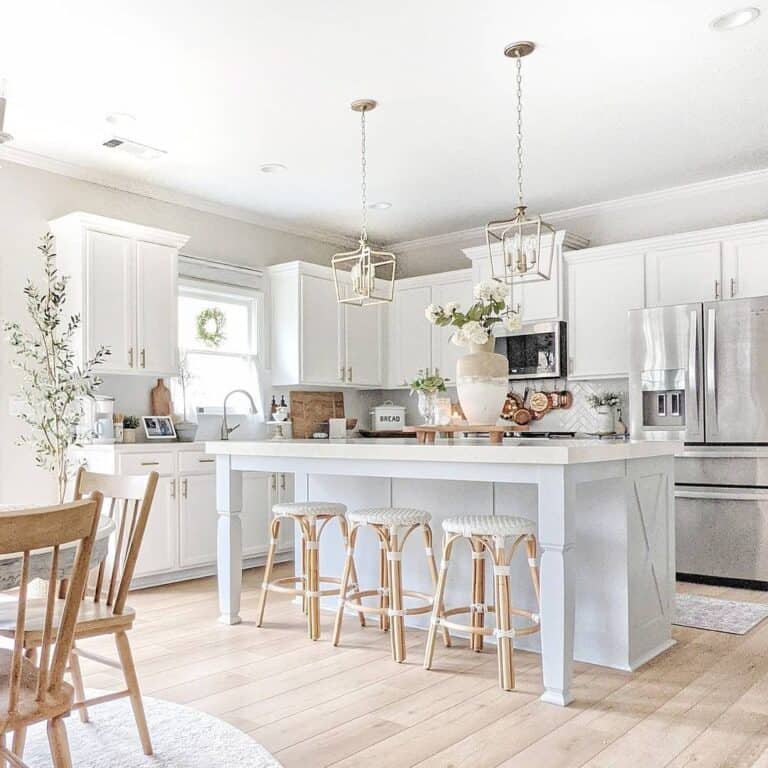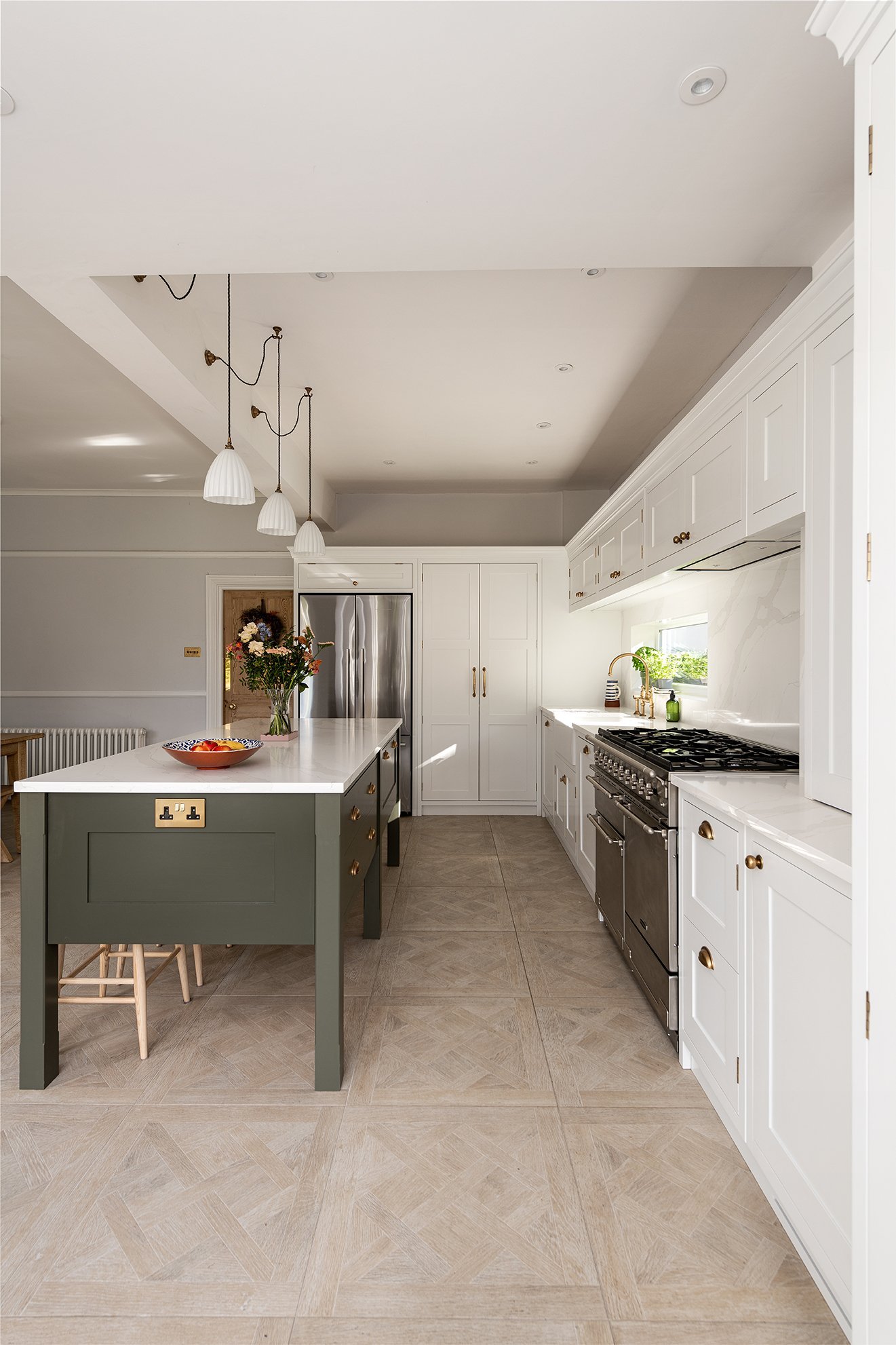Kitchen Island Legs: Enhance Your Kitchen with Solid Assistance
Kitchen Island Legs: Enhance Your Kitchen with Solid Assistance
Blog Article
A Guide to Picking the Suitable Cooking Area Island for Your Home
Picking the best cooking area island is a multi-faceted choice that can dramatically affect both the functionality and aesthetics of your home. Recognizing your cooking area's spatial characteristics is the first action, making certain that the island fits seamlessly without interfering with the flow. Beyond space considerations, determining the key objective of the island-- be it for meal preparation, dining, or additional storage-- is crucial. The selection of materials and surfaces also plays an important duty in balancing the island with your kitchen area's general style. As we check out these elements even more, the nuances of each decision will come to be clear.
Examining Your Room
Prior to choosing a kitchen area island, it is necessary to completely analyze your space to ensure the enhancement will be both useful and visually pleasing. Begin by measuring the offered location, including the size, size, and elevation of the cooking area. Exact dimensions are crucial to prevent buying an island that bewilders the space or one that is disproportionately little.
Consider the existing layout and exactly how the island will certainly integrate with the present website traffic flow. A well-placed island ought to not hinder or block paths access to important home appliances, such as the sink, oven, and refrigerator. Leave ample clearance room-- generally around 36 to 48 inches on all sides-- to permit comfortable activity and work space performance.
Following, evaluate the natural light and sightlines within your kitchen. An island that blocks a home window or disrupts aesthetic cohesion can make the area feel dark and cramped. Think of exactly how the island's positioning will impact lighting and exposure, guaranteeing it improves as opposed to diminishes the kitchen area's setting.
Identifying the Objective
Figuring out the objective of your kitchen area island is a crucial action in ensuring it satisfies your specific requirements and choices. Prior to diving into layout or size factors to consider, it is vital to clarify what main feature the island will certainly serve in your cooking area. Will it be a main hub for meal prep work, an informal eating location, or perhaps an added storage space solution?
Furthermore, ample counter area for mixing and slicing, along with accessible storage space for kitchen tools and ingredients, can change the island into an efficient workstation. Conversely, if the island is meant to help with social communications or serve as a dining area, seating arrangements become extremely important.

Picking the Right Dimension
Choosing the right size for your kitchen island is an equilibrium of performance and space optimization. An excellent cooking area island should offer enough work space while making certain that activity around the kitchen continues to be unblocked. Begin by measuring your cooking area space; a minimum clearance of 36 to 42 inches around the island is required to enable comfy activity and access.
The dimensions of the island must mirror its intended use. If the island will serve primarily as a prep area, a size of 24 to 36 inches may be enough.

Lastly, ensure that the island's dimension enhances the overall kitchen area layout, staying clear of any kind of overwhelming existence that may interfere with the kitchen's aesthetic and energy - kitchen island legs. Careful planning and precise dimensions will help you accomplish a harmonious and effective cooking area setting
Choosing Materials and Finishes
After figuring out the appropriate dimension for your cooking area island, the following step includes picking ideal materials and surfaces. The option of materials substantially affects both the aesthetic charm and performance of your kitchen area island. Popular materials for counter tops include granite, quartz, and butcher block, each offering distinctive advantages.
Along with the countertop, take into consideration the products for the island base. Solid timber supplies a traditional, strong look, while stainless-steel gives a streamlined, modern-day look and is very easy to tidy. Repainted coatings can introduce a dash of shade, with options ranging from low-key pastels to bold, dynamic hues.
Pay attention to the sturdiness of coatings, particularly in high-traffic locations, to maintain the island's appearance over time. Picking the appropriate materials and surfaces will boost both the performance and aesthetic allure of your kitchen area island.
Incorporating Useful Features
Including functional attributes right into your kitchen island can significantly enhance its energy and ease, transforming it right into a functional focal point of your cooking area. One necessary attribute to think about is extra storage space. Incorporating closets, a fantastic read drawers, and open shelving can offer much-needed space for pots and pans, tools, and tiny appliances, check that assisting to preserve a clutter-free environment.
One more important enhancement is a built-in sink or cooktop, which can improve meal preparation and clean-up processes. A sink can promote jobs such as washing veggies and cleaning dishes, while a cooktop can enable cooking directly on the island, fostering an extra interactive and social cooking experience.
Take into consideration including seating options, especially if your cooking area functions as a casual eating area. Bar feceses or built-in benches can transform the island right into a multifunctional space for dishes, research, or informal celebrations.
Lastly, incorporating electric outlets right into your kitchen island can improve its practicality. Electrical outlets provide convenient accessibility for tiny cooking area appliances, charging terminals for digital tools, and additional illumination alternatives.
Final Thought

Before choosing a kitchen area island, it is important to thoroughly assess your room to ensure internet the enhancement will be both practical and cosmetically pleasing.Selecting the best dimension for your cooking area island is an equilibrium of capability and area optimization. kitchen island legs. An ideal kitchen area island need to supply adequate work space while guaranteeing that movement around the cooking area stays unimpeded.Including functional features right into your cooking area island can considerably improve its energy and ease, transforming it right into a flexible centerpiece of your kitchen.In conclusion, selecting the perfect cooking area island necessitates a detailed analysis of the available area, clearness regarding its primary feature, and careful factor to consider of the appropriate dimension and products
Report this page